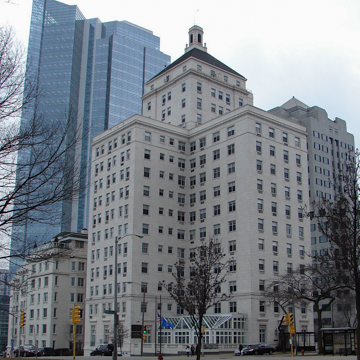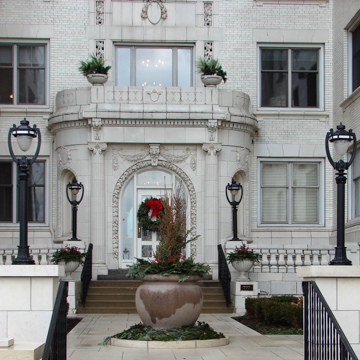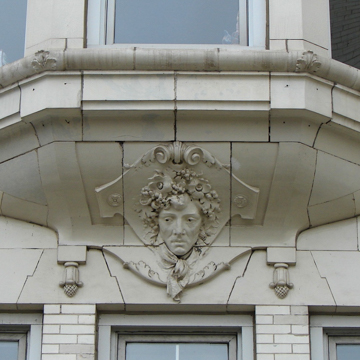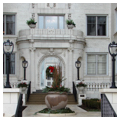Gleaming white walls make this massive apartment complex highly visible on Milwaukee’s Lake Michigan shoreline. The Cudahy consists of two distinct sections, built twenty years apart. The seven-story south end erected by Patrick Cudahy of meatpacking fame was called Buena Vista Flats when it opened in 1909. Its large windows and deeply indented light courts provided every unit with sunshine and fresh air. The white-glazed brick cladding used what was then an innovative new material. The fourteen-story north tower added in 1928–1929 employed white-glazed terra-cotta to match the older building, but its taut exterior, illustrating the fading classicism of the 1920s, contrasts with the boldly modulated elevations of the former Buena Vista Flats. The differences show the revolution in taste that occurred in the early twentieth century. Behind the Buena Vista is an even more austere high-rise building, an example of a third generation of tall building design.
The Cudahy has always been a chic apartment address. Although joined on the interior since 1929, the two buildings have maintained separate identities. The Buena Vista Flats building was renovated and converted to luxury condominiums in the late 1980s. Cudahy Tower remains a rental apartment building.







